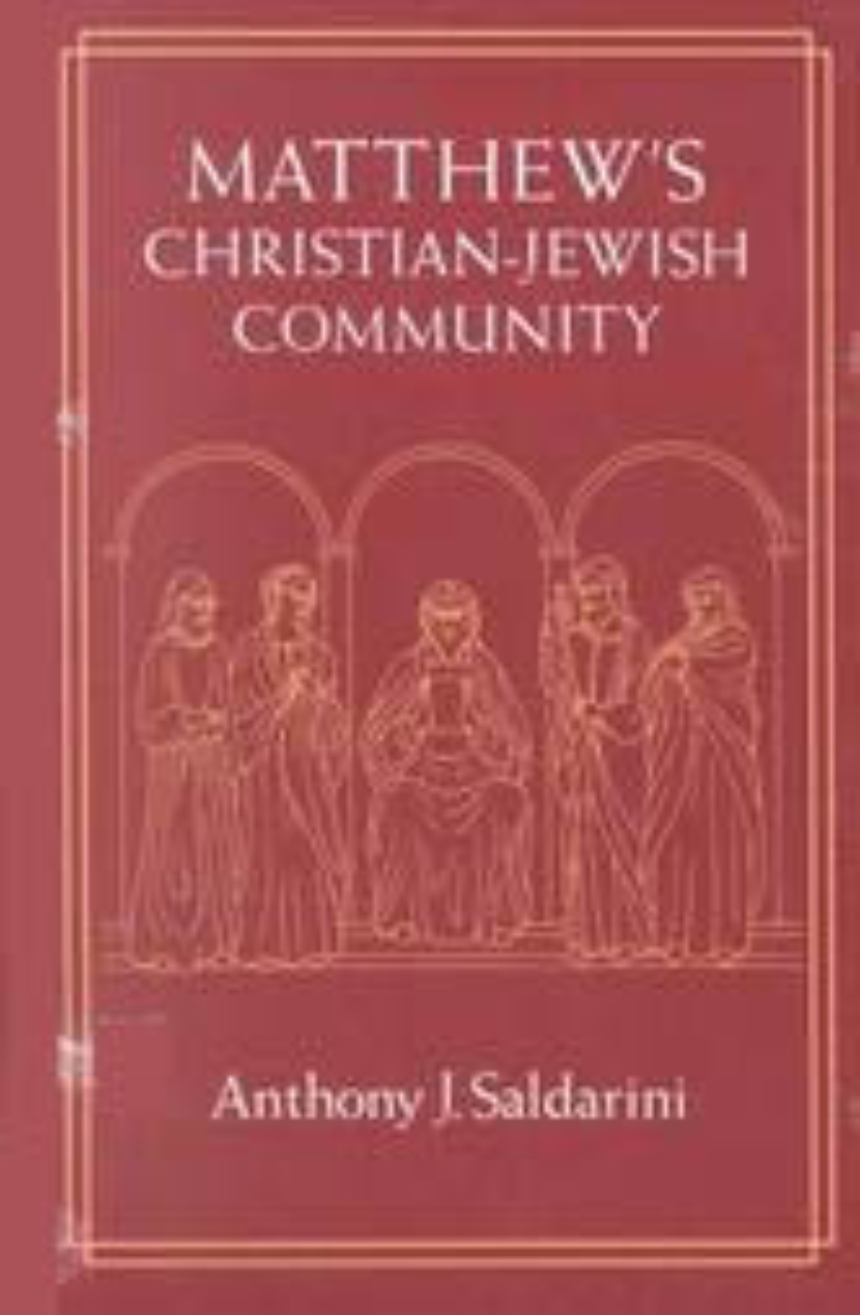Matthew’s Christian-Jewish Community
The most Jewish of gospels in its contents and yet the most anti-Jewish in its polemics, the Gospel of Matthew has been said to mark the emergence of Christianity from Judaism. Anthony J. Saldarini overturns this interpretation by showing us how Matthew, far from proclaiming the replacement of Israel by the Christian church, wrote from within Jewish tradition to a distinctly Jewish audience.
Recent research reveals that among both Jews and Christians of the first century many groups believed in Jesus while remaining close to Judaism. Saldarini argues that the author of the Gospel of Matthew belonged to such a group, supporting his claim with an informed reading of Matthew’s text and historical context. Matthew emerges as a Jewish teacher competing for the commitment of his people after the catastrophic loss of the Temple in 70 C.E., his polemics aimed not at all Jews but at those who oppose him. Saldarini shows that Matthew’s teaching about Jesus fits into first-century Jewish thought, with its tradition of God-sent leaders and heavenly mediators.
In Saldarini’s account, Matthew’s Christian-Jewish community is a Jewish group, albeit one that deviated from the larger Jewish community. Contributing to both New Testament and Judaic studies, this book advances our understanding of how religious groups are formed.
Recent research reveals that among both Jews and Christians of the first century many groups believed in Jesus while remaining close to Judaism. Saldarini argues that the author of the Gospel of Matthew belonged to such a group, supporting his claim with an informed reading of Matthew’s text and historical context. Matthew emerges as a Jewish teacher competing for the commitment of his people after the catastrophic loss of the Temple in 70 C.E., his polemics aimed not at all Jews but at those who oppose him. Saldarini shows that Matthew’s teaching about Jesus fits into first-century Jewish thought, with its tradition of God-sent leaders and heavenly mediators.
In Saldarini’s account, Matthew’s Christian-Jewish community is a Jewish group, albeit one that deviated from the larger Jewish community. Contributing to both New Testament and Judaic studies, this book advances our understanding of how religious groups are formed.
326 pages | 6 x 9 | © 1994
Chicago Studies in the History of Judaism
Religion: Christianity, Judaism
Table of Contents
Introduction
I: Matthew within First-Century Judaism
II: Matthew’s People: Israel
III: Matthew’s Opponents: Israel’s Leaders
IV: Matthew’s Horizon: The Nations
V: Matthew’s Group of Jewish Believers-in-Jesus
VI: Matthew’s Torah
VII: Jesus, Messiah and Son of God
VIII: Conclusions
Abbreviations
Notes
Index
I: Matthew within First-Century Judaism
II: Matthew’s People: Israel
III: Matthew’s Opponents: Israel’s Leaders
IV: Matthew’s Horizon: The Nations
V: Matthew’s Group of Jewish Believers-in-Jesus
VI: Matthew’s Torah
VII: Jesus, Messiah and Son of God
VIII: Conclusions
Abbreviations
Notes
Index
